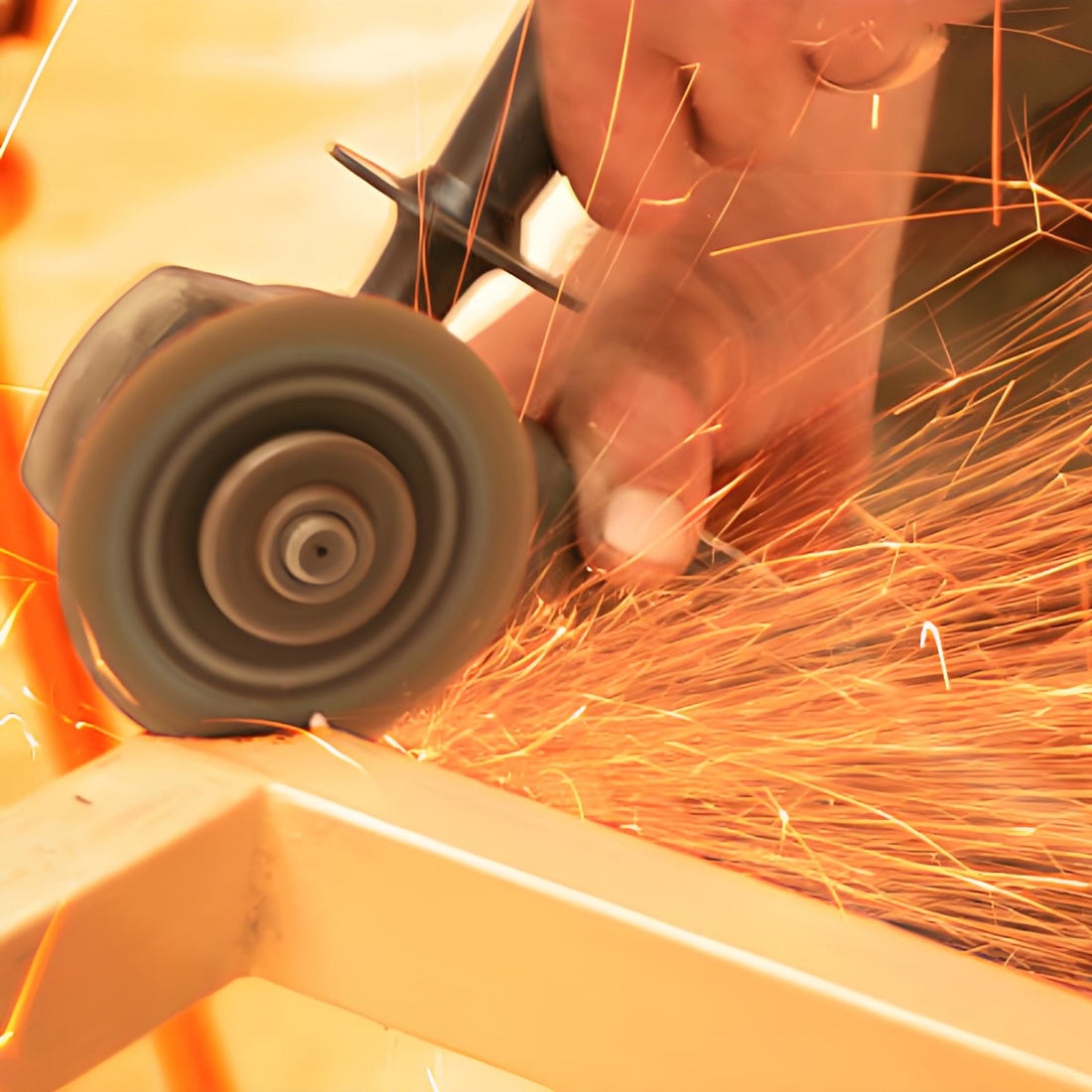The lifespan of a 10-inch metal cutting wheel depends on a variety of factors, including the material being cut, the quality of the wheel, and the conditions of use. To comprehensively answer this question, we will provide you with detailed information and valuable references to improve your understanding and guide you to get the most out of your metal cutting wheels.
Understanding the Lifespan of a Cutting Wheel
A cutting wheel , also known as a cutting disc, is a disk designed to cut various materials, including metal. The lifespan of these wheels is influenced by several key factors:
- Material being cut: Harder materials, such as stainless steel or cast iron, wear the cutting wheel faster than softer metals, such as aluminum.
- Wheel Quality: High-quality cutting wheels are generally made of superior materials and designed to last longer.
- Conditions of use: Factors such as cutting tool speed, pressure applied during cutting, and the presence of cooling or lubrication can significantly impact wheel durability.
Cutting wheel life
Cutting discs have a shelf life, meaning they can be used safely and effectively over a period of time. The shelf life of most cutting discs is approximately three years from the date of manufacture. After this period, the integrity of the cutting wheel may be compromised, posing a potential safety risk.
All quality brake discs have a stamped expiry date, which is usually no more than three years from the date of manufacture. Using expired brake discs can reduce performance and increase the risk of the disc cracking during use.

Factors that influence wheel wear
- Hardness and Material Type: As mentioned above, cutting harder metals will wear down the wheel faster. For example, stainless steel and high carbon steel are more abrasive to the cutting wheel compared to softer metals like aluminum or brass.
- Cutting Speed: Operating at the manufacturer's recommended speed is crucial. Exceeding these speeds can generate excessive heat, leading to faster wear and possible blade failure.
- Pressure and Technique: Applying excessive pressure while cutting can cause the wheel to wear unevenly and prematurely. Using proper technique, such as allowing the wheel to do the cutting instead of forcing it through the material, can extend the life of the wheel.
- Environmental Conditions: Exposure to moisture, extreme temperatures, and other environmental factors can degrade wheel material over time. Proper storage in a cool, dry location can help maintain wheel integrity.

Practical and safety considerations
The importance of following safe practices when using portable cutting wheels. Proper installation, correct speed settings, and using the right type of wheel for the material are critical to safety and to prolonging the life of your wheels.
Here are some tips and precautions to consider:
- Do: Use the correct wheel for the specific material and application.
- Don't: Use a wheel that has passed its expiration date.
- Do: Inspect wheels before use for signs of damage or wear.
- Don't: Apply excessive pressure or use a wheel at speeds higher than recommended.
- Do: Store wheels in a cool, dry place away from direct sunlight and moisture.
- Don't: Use a wheel that has been exposed to severe environmental conditions without proper inspection.

Real world examples and data
In practical terms, the actual usage time of a 10-inch metal cutting wheel can vary significantly. For example, when cutting mild steel with moderate pressure and proper technique, a high-quality cutting wheel may last approximately 60-100 cuts. However, if cutting stainless steel or using aggressive pressure, the same wheel may only last 30-50 cuts.
To provide a more complete perspective, here is a comparison table summarizing the expected life of a 10-inch cutting wheel under different conditions:
| Type of material | Average Lifespan (Number of Cuts) | Grades |
| Mild steel | 60-100 | Moderate pressure, proper technique |
| Stainless steel | 30-50 | Faster wear due to hardness of material |
| Aluminum | 80-120 | Softer material, less wear |
| Cast iron | 40-70 | Intermediate hardness |
| High carbon steel | 20-40 | Very abrasive, faster wear |
Conclusion
The lifespan of a 10-inch metal cutting wheel is highly variable and depends on several factors, including the type of material being cut, the quality of the wheel, and the conditions in which it is used. While high-quality wheels and proper usage techniques can significantly extend the lifespan, it is crucial to adhere to safety guidelines and keep an eye on the wheel's expiration date. By doing so, you can ensure both optimal performance and safety during your cutting tasks.
I hope the above information is useful to you. If you want to know more details about cutting discs, go to https://flamingoherramientas.com/ to obtain it.

